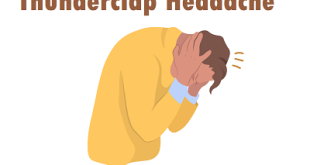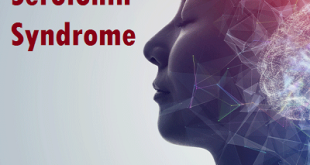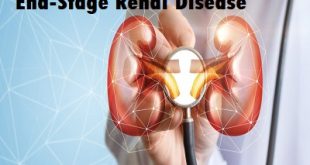Definition
Epilepsy is defined as the repeated occurrence of sudden, excessive and/or synchronous discharges in cerebral cortical neurons resulting in disruption of consciousness, disturbance of sensation, movements, impairment of mental function, or some combination of these signs. Because of their sudden nature, seizures are called ictal events, from the Latin ictus meaning ‘to strike’. The terms epilepsy, seizure and convulsion are not synonymous.
Brain of epileptic and Normal brain
Types of epileptic seizures
There are three diagnoses a doctor might make when treating a patient with epileptic seizures:
- Idiopathic – this means there is no apparent cause.
- Cryptogenic – this means the doctor thinks there is most probably a cause, but cannot pinpoint it.
- Symptomatic – this means that the doctor knows what the cause is.
There are three descriptions of seizures, dependant on what part of the brain the epileptic activity started:
Partial seizure
A partial seizure means the epileptic activity took place in just part of the patient’s brain. There are two types of partial seizure:
- Simple partial seizure – the patient is conscious during the seizure. In most cases, the patient is also aware of their surroundings, even though the seizure is in progress.
- Complex partial seizure – the patient’s consciousness is impaired. The patient will generally not remember the seizure, and if they do, their memory will be vague.
Generalized seizure
A generalized seizure occurs when both halves of the brain have epileptic activity. The patient’s consciousness is lost while the seizure is in progress.
- Tonic-clonic seizures (previously known as grand mal seizures) – these are perhaps the best known type of generalized seizure. They cause a loss of consciousness, body stiffness, and shaking.
- Absence seizures (previously called petit mal seizures) – these involve short lapses in consciousness where the individual appears to be staring off into space. Absence seizures often respond well to treatment.
- Tonic seizures – muscles become stiff. They may cause a fall.
- Atonic seizures – loss of muscle control, causing the individual to drop suddenly.
- Clonic seizures – associated with rhythmic, jerking movements.
Secondary generalized seizure
A secondary generalized seizure occurs when the epileptic activity starts as a partial seizure, but then spreads to both halves of the brain. As this development happens, the patient loses consciousness.
Ancient descriptions and concepts
The earliest detailed account of epilepsy is in the British Museum, London. It is part of a Babylonian text on medicine, Sakikku [All diseases], which was written over 3000 years ago, i.e. before 1000 BC. I have had the privilege of working with a Babylonian scholar, James Kinnier Wilson, on the translation of this text.
The Babylonians were keen observers of clinical phenomena and provide remarkable descriptions of many of the seizure types (miqtu) that we recognize today, including what we would call tonic clonic seizures, absences, drop attacks, simple and complex partial seizures and even focal motor (Jacksonian) or gelastic attacks. They also understood some aspects of prognosis, including death in status as well as post-ictal phenomena. The Babylonians had no concept of pathology, however, and each seizure type was associated with invasion of the body by a particular named evil spirit. Thus treatment was not medical but spiritual.
Interestingly, Hippocrates also had some notion that epilepsy could become chronic and intractable if not treated early and effectively, although it is not clear exactly what treatments he had in mind: “Moreover it can be cured no less than other diseases so long as it has not become inveterate and too powerful for the drugs which are given. When the malady becomes chronic, it becomes incurable.” Unfortunately the Hippocratic concept of a treatable brain disorder had little influence on the prevailing supernatural view, as is well described in the scholarly history of epilepsy from the Greeks to the late 19th century by Temkin.
Incidence and prevalence
The incidence (the number of new cases per year) of epilepsy is 24–53 per 100 000 population in developed countries. There are few incidence studies in developing countries, none of which is prospective: they show rates from 49.3 to 190 per 100 000 population. Higher incidence rates in developing countries, thought to be attributable to parasitosis particularly neurocysticercosis, HIV, trauma, perinatal morbidity and consanguinity, are difficult to interpret because of methodological issues, particularly the lack of age adjustment, which is important because epilepsy has a bimodal peak with age. Incidence rates worldwide are greater in men than women. In developed countries, incidence among the elderly is rising and among children it is falling. This is relevant to developing countries as longevity rises and risk of cerebrovascular disease increases. Conversely, better obstetric care and infection control can diminish incidence in children.
The prevalence (the total number of cases at a particular point in time) of active epilepsy in a large number of studies has been shown to be fairly uniform at 4–10 per 1000 population. Higher prevalences in sub-Saharan Africa and Central and South America have been reported, possibly due to methodological differences, consanguinity or environmental factors and particularly so in rural areas. It is difficult to tease out racial and socioeconomic factors. Prevalence data are primarily used by health planners and for generating aetiological hypotheses.
Some causes of epilepsy
In the majority of cases, no cause for epilepsy can be found and it is described as idiopathic. There are, however, a number of recognized factors that increase a person’s risk of developing epilepsy. These include:
- Brain scarring or brain damage, e.g. due to birth injuries, accidents, physical assaults, excessive use of alcohol/drugs
- Infections and fevers, e.g. meningitis, rubella, encephalitis, AIDS.
- Benign and malignant tumours
- Genetic factors, e.g. tuberous sclerosis
- Dementia and neurodegenerative disorders, e.g. Alzheimer’s disease
- Stroke, which can occur at any age
- Parasitic infections, e.g. malaria
- Developmental disorders – for instance, autism or neurofibromatosis
- Genetics
Risk factors
Sometimes a risk factor can cause scarring of the brain or lead to areas of the brain not developing or working right. Risk factors include:
- Babies who are born small for their age
- Babies who have seizures in the first month of life
- Babies who are born with abnormal areas in the brain
- Bleeding into the brain
- Abnormal blood vessels in the brain
- Serious brain injury or lack of oxygen to the brain
- Brain tumors
- Infections of the brain: abscess, meningitis, or encephalitis
- Stroke resulting from blockage of arteries
- Cerebral palsy
- Conditions with intellectual and developmental disabilities
- Seizures occurring within days after head injury (“early posttraumatic seizures”)
- Family history of epilepsy or fever-related seizures
- Alzheimer’s disease (late in the illness)
- Autism spectrum disorder
- Fever-related (febrile) seizures that are unusually long
- Long episodes of seizures or repeated seizures called status epilepticus
- Use of illegal drugs such as cocaine
- Mild head injuries, such as a concussion with just a very brief loss of consciousness, do not cause epilepsy. Yet the effects of repeated mild head injuries and epilepsy is unknown.
Epilepsy symptoms
The main symptom of epilepsy is repeated seizures. If one or more of the following symptoms are present, the individual should see a doctor, especially if they recur:
- A convulsion with no temperature (no fever)
- Short spells of blackout, or confused memory
- Intermittent fainting spells, during which bowel or bladder control is lost, which is frequently followed by extreme tiredness
- For a short period, the person is unresponsive to instructions or questions
- The person becomes stiff, suddenly, for no apparent reason
- The person suddenly falls for no clear reason
- Sudden bouts of blinking without apparent stimuli
- Sudden bouts of chewing, without any apparent reason
- For a short time the person seems dazed and unable to communicate
- Repetitive movements that seem inappropriate
- The person becomes fearful for no apparent reason; they may even panic or become angry
- Peculiar changes in senses, such as smell, touch, and sound
- The arms, legs, or body jerk, in babies these will appear as a cluster of rapid jerking movements
Complications of Epilepsy
- If you fall during a seizure, you can injure your head or break a bone.
- If you have epilepsy, you’re 15 to 19 times more likely to drown while swimming or bathing than the rest of the population because of the possibility of having a seizure while in the water.
- Car accidents. A seizure that causes either loss of awareness or control can be dangerous if you’re driving a car or operating other equipment.
- Pregnancy complications. Seizures during pregnancy pose dangers to both mother and baby, and certain anti-epileptic medications increase the risk of birth defects. If you have epilepsy and you’re considering becoming pregnant, talk to your doctor as you plan your pregnancy.
- Emotional health issues. People with epilepsy are more likely to have psychological problems, especially depression, anxiety and, in extreme cases, suicide. Problems may be a result of difficulties dealing with the condition itself as well as medication side effects.
- Sudden unexplained death in epilepsy (SUDEP).People with epilepsy also have a small risk of sudden unexplained death. The cause is unknown, but some research shows it may occur due to heart or respiratory conditions.
Diagnosis and Testing of Epilepsy
The evaluation of patients with epilepsy is aimed at determining the type of seizures and their cause, since different types respond best to specific treatments. The diagnosis is based on:
- The patient’s medical history, including any family history of seizures, associated medical conditions and current medications.
- A complete physical and neurological examination —your muscle strength, reflexes, eye sight, hearing and ability to detect various sensations are tested so your doctors can better understand the cause of your seizures.
- An electroencephalogram (EEG), which measures electrical impulses in the brain. This is the only test that directly detects electrical activity in the brain, and seizures are defined by abnormal electrical activity in the brain. During an EEG, electrodes (small metal disks) are attached to specific locations on your head. The electrodes are attached to a monitor to record the brain’s electrical activity. The EEG is useful not only to confirm a diagnosis of epilepsy, but also to determine the type of epilepsy.
A routine EEG only records about 20 minutes of brain waves (however, the routine EEG procedure takes about 90 minutes). Because 20 minutes is such a short amount of time, the results of routine EEG studies are often normal, even in people known to have epilepsy. Therefore, prolonged EEG monitoring may be necessary.
- EEG-video monitoring is an even better diagnostic method. During this type of monitoring, an EEG monitors the brain’s activity and cameras videotape body movements and behavior during a seizure. Prolonged monitoring often requires the patient to spend time in a special facility for several days. Prolonged EEG-video monitoring is the only definitive way to diagnose epilepsy.
- Imaging studies of the brain, such as those provided by magnetic resonance imaging (MRI). This can identify the cause of the seizures, but the vast majority of patients with epilepsy have normal MRIs.
Medication and Treatment
Drug Therapy
Many drugs are available to treat epilepsy, several of which have only recently been released. Older, classic medications used to treat epilepsy include:
- Phenytoin (Dilantin)
- Phenobarbital
- Carbamazepine (Tegretol, Carbatrol)
- Primidone (Mysoline)
- Ethosuximide (Zarontin)
- Valproic acid (Depakote)
- Diazepam (Valium) and its derivatives
Newer drugs to treat epilepsy include:
- Felbamate (Felbatol)
- Gabapentin (Neurontin)
- Lamotrigine (Lamictal)
- Oxcarbazepine (Trileptal)
- Topiramate (Topamax)
- Tiagabine (Gabitril)
- Levetiracetam (Keppra)
- Zonisamide (Zonegran)
Other Treatment Options
- Epilepsy surgery is safe and effective, and is the treatment of choice when drugs do not work. (see pamphlet on epilepsy surgery).
- The ketogenic diet is effective for treating certain types of epilepsy. Specifically, it is effective in children with severe symptomatic generalized epilepsies with more than one type of seizure and brain damage. However, the diet requires careful planning and may be difficult to follow, so is usually not feasible in older children or adults. The diet is started in the hospital, and when successful, it is usually maintained for 2 to 3 years. It requires a very motivated family, and a qualified dietician.
- Vagus nerve stimulation (VNS). This treatment requires minor surgery to implant a stimulator, which is about the size of a pacemaker. It is placed under the skin in the left upper chest, like a pacemaker. This treatment appears to be effective for seizures that do not respond well to medications alone.
First aid steps for an Epilepsy person
- Stay calm.
- Look around – is the person in a dangerous place? If not, don’t move them. Move objects like furniture away from them.
- Note the time the seizure starts.
- Stay with them. If they don’t collapse but seem blank or confused, gently guide them away from any danger. Speak quietly and calmly.
- Cushion their head with something soft if they have collapsed to the ground.
- Don’t hold them down.
- Don’t put anything in their mouth.
- Check the time again. If a convulsive (shaking) seizure doesn’t stop after 5 minutes, call for an ambulance.
- After the seizure has stopped, put them into the recovery position and check that their breathing is returning to normal.
- Stay with them until they are fully recovered.
Prevention and control of epilepsy
Here are some tips that may help reduce your risk of having an epilepsy seizure:
- Get plenty of sleep each night — set a regular sleep schedule, and stick to it.
- Learn stress management and relaxation techniques.
- Avoid drugs and alcohol.
- Take all of your medications as prescribed by your doctor.
- Avoid bright, flashing lights and other visual stimuli.
- Skip TV and computer time whenever possible.
- Avoid playing video games.
- Eat a healthy diet.
 Diseases Treatments Dictionary This is complete solution to read all diseases treatments Which covers Prevention, Causes, Symptoms, Medical Terms, Drugs, Prescription, Natural Remedies with cures and Treatments. Most of the common diseases were listed in names, split with categories.
Diseases Treatments Dictionary This is complete solution to read all diseases treatments Which covers Prevention, Causes, Symptoms, Medical Terms, Drugs, Prescription, Natural Remedies with cures and Treatments. Most of the common diseases were listed in names, split with categories.








let me take this opportunity to thank you for this information that I have read concerns epilepsy. I have this problem over 20yrs but still under medication.how long should take this tegletol
If you are still having severe complications of epilepsy then you should speak to an epilepsy specialist about your problems. Unless or until you get diagnosed from a neurologist you should not stop your medication. Because, to prevent the reversal of your diseases you should not stop.
so helpful for me
helpful
so helpful indeed.
what are the effects of prolonged intake of carbatrol.?
Are there no other substitute drugs for carbatrol,because of body itching during cold seasons caused by the drug.?
Major side effects are:
Blurred vision or double vision
continuous back-and-forth eye movements
Uncoordinated
Confused
Dizzy
Drowsiness
Feel Like Throwing Up
Throwing Up
Unsteady Walking
Please consult with your doctor for the substitute drugs.
Does Tegretol pose any danger to mother or baby during pregnancy?.If yes what are the dangers.
Tegretol use during pregnancy increases the risk of birth defects, including spina bifida, head or facial deformities, and heart defects.
just can you mention emergency steps…for these kind of patients..
Kindly look at the post. First aid steps are updated.
Thank you for this very helpful application.
My daughter underwent Brain hemorrhage surgery when 2 days..tried with vigabatrin…nitrazapem…topamac.. valporic acid… carbamazapine..lacosamytes.. with combinations n maximum dose… no fruitful result.. she is now 7 yrs with no milestones achieved.. generalized myoclonic seizure with modified hypsarrythmia. Any suggestions pls. from india
There are several medicines and therapy that can help prevent myoclonic seizures. Myoclonic seizures often respond well to the appropriate medicine. but please consult doctor and share your concern right away.
Am happy to see this, my 13yrs daughter as been suffering from this sickness and she has been on medication for at least two years and symptoms are still there such as poor performance in academic, difficulty in pronunciation. These are the drugs she has been taken, please can we continue with the drugs? Thanks. COGNITOL vinpocetine 5mg tablets
2. RISPERIDONE 1mg film-coated tablets
3. EPILIM 200 Gastro – resistant tablets
Sodium valproate.
It is advised to consult with a doctor before going on to other medicines. Go to rehabilitation centers.
My 13yrs old daughter has been suffering from epilepsy and has been on medication for the past 2yrs. But up to now she is experiencing difficulty in pronunciation and poor academic performance. she has been on the following drugs. Should she continue with these drugs or help us with appropriate drugs that will help her overcome this problem.
1. COGNITOL vinpocetine 5mg tablets
2. RISPERIDONE 1mg film-coated tablets
3. EPILIM 200 Gastro – resistant tablets
Sodium valproate
Consult an epilepsy specialist to get a proper treatment.
diet for epileptic person.
Meat and Seafood: A ketogenic diet can help reduce or eliminate seizures, according to the Epilepsy Foundation of America, though doctors remain unsure as to why. Once your doctor approves a ketogenic diet, each of your plates should contain roughly 80 percent protein. Choose high-quality protein sources most often, which include lean red meat, poultry, fish and seafood, such as shrimp, scallops and lobster.
Butter and Oil: Butter and oil are fat sources, which help your body absorb fat-soluble nutrients and enhance brain function.
Fruits and Vegetables: Fruits and vegetables provide rich amounts of antioxidants — nutrients that support your body’s ability to defend itself from disease. To increase your antioxidant intake, incorporate a variety of colorful fruits and vegetables, such as berries, cherries, citrus fruits, tomatoes, spinach, kale, broccoli, and Brussels sprouts, into your diet regularly. If you’re following a ketogenic diet, choose non-starchy vegetables, such as leafy greens, bell peppers, string beans and broccoli, which are low in carbohydrates, most often.
my 18 year old has it for two years naw but she is taking cabamaxipine but she only have attack when she goes to school.but get worse when she skip her drugs even for a day.
Please consult a doctor as soon as possible. Because it may affect your daughter iq level.
thank you for the information provided about epilepsy I have been on treatment of sodium valproate 500mg daily for 10 years now.I still have episodes after 6 to 8 months, is there something I should ask my doctor to do to avoid dat,because I used to stay a year or two without attack.
Please consult with your doctor once before you quit the medication.
how to prevent tongue bite during attack of seizure..!?
you said that dont put anything in mouth.
There is a product called Canker Cover by DenTek that works so good. It’s a small tablet that adheres to the sore area and forms a gel patch that lasts for hours. Provides almost instant and complete pain relief. It also seems to drastically decrease healing time.
can seizure treated by herbal medicine?
Some of the most commonly used herbs for epilepsy are:
burning bush
groundsel
hydrocotyle
lily of the valley
mistletoe
mugwort
peony
scullcap
tree of heaven
valerian
can epilepsy be treated
Its effects can be reduced but can’t be cured.
can epilepsy be treated because my daughter took phinobabitone it almost destroyed her memory
The effects can be reduced but can’t be cured. Please consult a doctor as soon as possible.
thanks for this tutorial lecture. it is informative and prevent someone from acting ignorantly.
my daughter has Been on drug carbamez for two years and the seizure has stopped. But d performance in d school has dropped from 80-55 percent. She is
still on d drug, When is d
appropriate time to stop d drug? Won’t this drug has side effect later in her future career and body metabolism. Thanks.
please consult a doctor.
After going through EEG test and MRI scan the findings shows {Essential Normal Brain MRI}.
which literally indicate that everything is normal.
pls advice on next step to take.
thanks.
everything is normal. so no problem. please consult a doctor to get more suggestions
please someone should give me direction on what to do.i choose to go for surgical operation outside Nigeria.I have been on this condition since 4years old and now I am 23years old.?????
Please consult a doctor ASAP to reduce the problem.
thank you so mutch,good working,
I really like your app I have a Daughter who suffers from epilepsy and this is the best information about the disease I have ever read. Is it possible to print the content of this page many thanks.
thank you. yes, it is possible to print this from your PC.
Thanks a lot 4 the information. My dad has been sick for the longest I can remember and my younger sister also has it. They have been on medication but we always try to help them where we can.
Consult a doctor as soon as possible.
need update on how to use cabamezape
common myths about epilepsy
which drugs can be use to cure epilepsy once and for all. i.e not recommended?
Stiripentol also available as Diacomit
Tiagabine available as Gabitril
Topiramate also available as Topamax
Valproic acid available as Convulex, Epilim Chrono, Epilim Chronosphere
Vigabatrin available as Sabril
Zonisamide also available as Zonegran
But please consult a doctor before you take this.
l really appreciate your effort on this platform.pls av been on tegretol for 3yrs now,l notice I do have memory loss,to even recall yesterday incidence was always a problem for me.pls how can I overcome this and when am I to stop this drug because am already
tired of using it.
Please consult a doctor asap.
please what deference between in the Convulsion and elpisema then how to treat convulsion
both are indifferent and there is no link between convulsion and emphysema.
Am a welder and I suffer from convulsions should I stop my career because of the bright light of welding could it be the one that causes the convulsions.
Please consult a doctor for better understand.
I got this condition when I was above 18years of age is it normal and it was not a head injury I was working in a hotel and I just conversed and fell to the ground and was treated with Epanutin is there a natural remedy to treat this I really miss alot I can’t smoke cannabis, I can drink alcohol
can it be treated?
Today, most epilepsy is treated with medication. Drugs do not cure epilepsy, but they can often control seizures very well.
what are the home remedies of epilepsy
Please read it in the post in this section
First aid steps for an Epilepsy person
carbomazipine can it dysfunction?I have experienced this problem since I started using it.
Common side effects of Tegretol (carbamazepine) include:
nausea,
vomiting,
dizziness,
drowsiness,
dry mouth,
swollen tongue,
loss of balance or coordination, or.
unsteadiness.
my son convulsed ND had cerebral malaria ND post mengiaties squance he has been on tegretol for more than a year nw yet no restoration of sight, cnt talk, cnt walk,cnt turn himself in bed ND hears partially
Please consult a neurologist as soon as possible. Kindly contact a rehabilitation team to recover from all such illness.
Is this disease curable or treatable and someone stay forever without taking any single drug?
Today, most epilepsy is treated with medication. Drugs do not cure epilepsy, but they can often control seizures very well. About 80% of people with epilepsy today have their seizures controlled by medication at least some of the time.
I like to know what can cause epilepsy in an adult.
It started at the age of 20.
No accident, no family history.
It just started like that.
What can cause that?
What are the likely way out?
Thanks.
Head trauma as a result of a car accident or other traumatic injury can cause epilepsy. Brain conditions. Brain conditions that cause damage to the brain, such as brain tumors or strokes, can cause epilepsy. Stroke is a leading cause of epilepsy in adults older than age 35.
Most people with epilepsy can become seizure-free by taking one anti-seizure medication, which is also called anti-epileptic medication.
can u plzzz help me any tonic for sharp memory after this problam mind is very week
plzzz reply must.i need ur help
please consult a doctor for a better prescription.
plzzz help me for solving my week memory..
Please consult psychologist.
Please consult a doctor to get rid of the problem.
thanks a lot sir, if your partner have epilepsy can it cross through sex , can you probably take the same medication she is taking to prevent it
Epilepsy is not a sexually transmitted disease.
Is the epilepsy patient can be normal patient if treatment properly.
Today, most epilepsy is treated with medication. Drugs do not cure epilepsy, but they can often control seizures very well. About 80% of people with epilepsy today have their seizures controlled by medication at least some of the time. Of course, that means that 20% of people with epilepsy are not helped by medication.
pls, 20yrs ago epilepsy have been affecting me, some past yrs a doctor dictated phenytoin for me, when I started using it, epilepsy stop but later arise, another doctor dictated cabarmacephine (tegretol), also when I started using it, epilepsy stoped, but it seems as if is rising again as am still using tegretol.
The seizure started few weeks after I had my 2nd baby at age 30. I’ve been on Tegretol for more than 4 years now, and I’ve done EEG of which the result was normal. The drug cause memory loss and I still experience the seizure like once in 6 months, so what do I do? I’m tired of taking the drugs everyday….
For an appropriate drug please consult a doctor. Since it requires surgery for a complete cure we suggest you take advice from a neurosurgery specialist.
Hie…can a person takes cabarmazaphine hv problem when want to have children
Taking carbamazepine might increase that chance to about 1%. Folic acid has been found to reduce the background risk for neural tube defects. If you take carbamazepine, your healthcare provider might recommend that you take extra folic acid before and during pregnancy.
what if the seizure.took 5 times in a span of minute?
Seizures that last over 5 minutes. This is a condition called status epilepticus. Status epilepticus can sometimes happen when a person suddenly stops taking seizure medication.
A using carbamazephine (tegretol) for a long time as it is now costly, Hope there is no effect if he/she change and begin to use another carbamazephine (not name as tegretol) that its cost is less.
my baby can’t make it with his skills. what can I do to help him move again en contacts for a surgeon doctor pliz
If your baby is experiencing difficulties due to epilepsy, consider consulting with a pediatric neurologist who specializes in nervous system disorders in children. Additionally, seek assistance from physical therapists, occupational therapists, and speech therapists to address motor skills, coordination, and communication challenges. You can ask your pediatrician for referrals or contact local children’s hospitals for specialized care. Always consult with healthcare professionals for personalized advice based on your baby’s specific situation.
Thanks very much for this helpful information. I have a question, will my epilepsy cured where by I stop taking phenobarbital and just be me?
Today, most epilepsy is treated with medication. Drugs do not cure epilepsy, but they can often control seizures very well.
can it be cure?
Epilepsy is a brain disease where nerve cells don’t signal properly, which causes seizures. Seizures are uncontrolled bursts of electrical activities that change sensations, behaviors, awareness and muscle movements. Although epilepsy can’t be cured, many treatment options are available. Please consult a doctor for treatment.